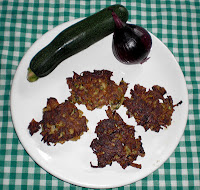At Parties
1 Don't stand close to the food table. Looking at the food stimulates the appetite, and
watching others helping themselves encourages you to do the same. 'Foodology'.
2 Alternate alcoholic drinks with soft, a favourite being sparkling mineral water with a dash
of fruit juice. Or a clear fruit juice such as cranberry.
3 Don't fill a wine glass more than two-thirds, and don't top up until the glass is empty.
4 Put a limit on canapes based on puff pastry. Usually great, but very calorific and don't
fill you up.
 |
| by D.L. via flickr.com |
5 Nut roasts are back in favour, as their fat is apparently 'good fat', but it's filling so a
small helping goes a long way.
6 Rather than a cream-based sauce, consider onion gravy - fry finely chopped onion in
just a little olive oil for a few minutes, add a little soft brown sugar and continue to
cook for another few minutes to caramelise, then add stock (e.g. from Marigold
low-salt bouillon powder) and a shake of soy sauce and simmer 10 minutes. Mix
a dessertspoon of cornflour with a little water to a paste, add to pan, and continue
to heat gently, while stirring, until the gravy thickens.
7 Instead of pure cream for desserts like pavlova, creme fraiche mixed with thick plain
yoghurt does well. Same goes for serving with Christmas pudding instead of
brandy butter.
8 As a rough guide, 3 chocs from the Quality Street/Roses tin contain 100-130 cals.
Rather than take one, then another, and so on, take your three favourites straight
away and eat them slowly. Or four.
9 If your group takes liqueurs after the lunch, a brandy - or other clear spirit with diet
mixer - is lighter than one of those gorgeous cream liqueurs. Sadly.
10 Best to avoid the 'Could I manage one more potato?', no matter how others might
encourage it. A good mantra is, 'Could I manage without it?'.
Of course this isn't meant to be kill-joy - there's plenty of joy around for most of us at Christmas. But so many people weigh themselves after the holiday and feel despondent about the extra weight. Aiming to stick to a max of two pounds extra avoids this without being too much of a wet blanket. It also means that it won't take much effort to lose it afterwards.
Happy Christmas, everyone!




















